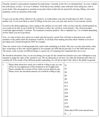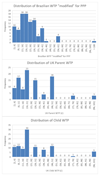Patients' and Parents' Valuation of Fluoride
- PMID: 31209443
- PMCID: PMC6588524
- DOI: 10.3290/j.ohpd.a42666
Patients' and Parents' Valuation of Fluoride
Abstract
Purpose: This study aimed to elicit willingness to pay (WTP) values for fluoride varnish application from participants using the publically-funded health services in Brazil and the UK, and to identify differences in the variables impacting these values. A secondary aim was to compare WTP values from parents for their own preventive treatment and their child's.
Materials and methods: This was a cross-sectional analysis of quantitative data collected from participants attending routine dental appointments. The clinics were hosted by the Pontifical Catholic University of Rio Grande do Sul (PUCRS), Brazil and Newcastle Dental Hospital, UK.
Results: The mean WTP for Brazilian adults was R$60.37 (=£15.97). WTP was highly variable and factors affecting it were difficult to identify. UK parents valued fluoride varnish at mean values of £28.21 and £28.12 for themselves and their child, respectively. Regression modelling found those with higher incomes had higher WTP in both samples. In the UK, parental and child WTP increased when parents had higher self-perceived need for dental treatment, had experienced recent dental pain, or their child had received restorations in the last 2 years.
Conclusions: WTP for fluoride varnish varied dramatically between individuals. In both countries, it was difficult to predict this variance, as factors which would likely impact upon on WTP had a limited effect and were sometimes counter-intuitive. WTP values for a parent and their child were not statistically significantly different.
Keywords: dentistry; economics; fluorides; preference-based measures.
Figures
References
-
- Bennett R, Tranter R. The dilemma concerning choice of contingent valuation willingness-to-pay elicitation format. Journal of Environmental Planning and Management. 1998;41:253–257.
-
- Birch S, Ismail IA. Patients preferences and the measurement of utilities in the evaluation of dental technologies. Journal of Dental Research. 2002;81:446–450. - PubMed
-
- Birch S, Sohn W, Ismail AI, Lepkowski JM, Belli RF. Willingness to pay for dentin regeneration in a sample of dentate adults. Community Dental Oral Epidemiology. 2004;32:210–6. - PubMed
-
- Damschroder LJ, Ubel PA, Rii J, Smith DM. An alternative approach for eliciting willingness-to-pay: A randomized Internet trial. Judgment and Decision Making. 2007;2:96–106.
MeSH terms
Substances
Grants and funding
LinkOut - more resources
Full Text Sources



